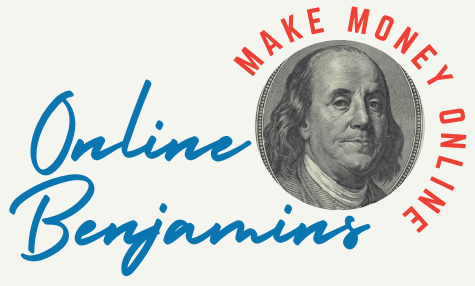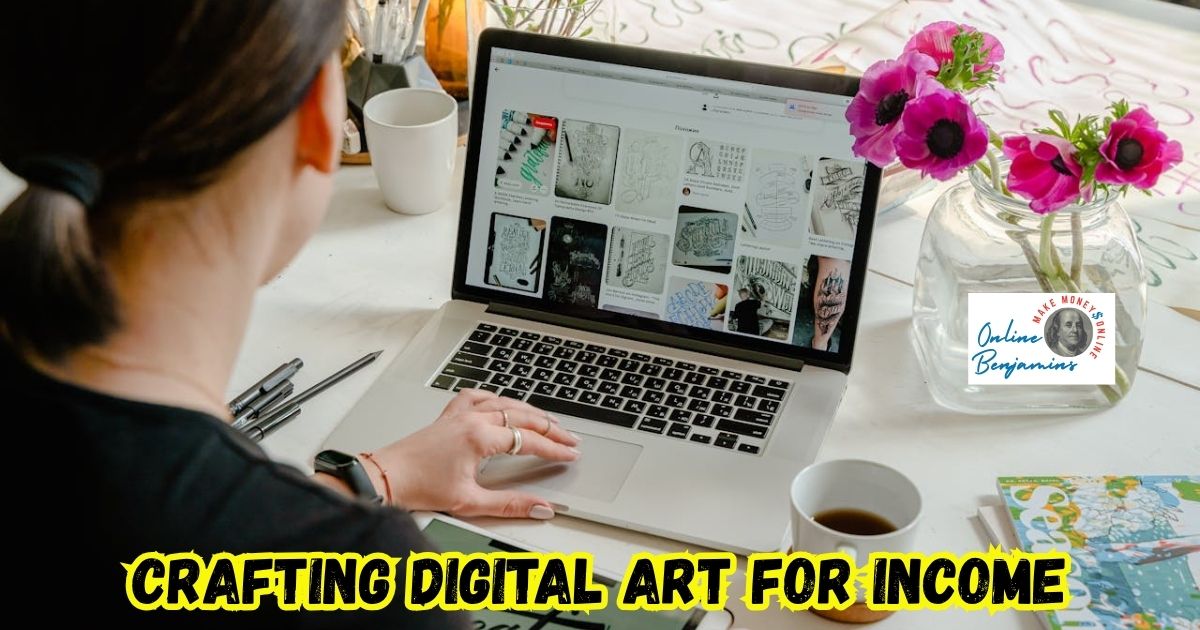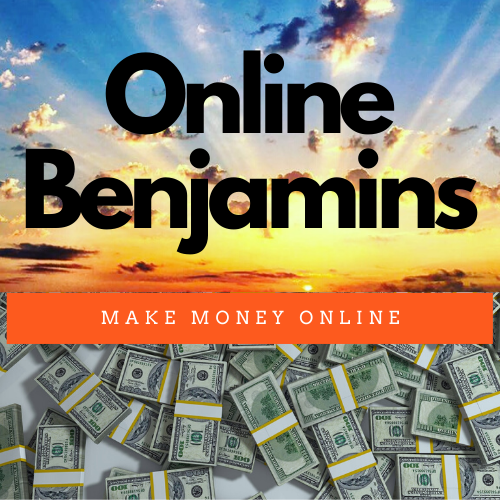Making personalized digital art can be a rewarding way to grow your income while exploring your creative skills. I’ve found that selling one-of-a-kind artwork and offering custom services lets me reach people looking for art that fits their unique tastes. With digital tools now so accessible, artists like me have more opportunities than ever to turn our creativity into consistent earnings.
QUICK LOOK: – 7 Steps to Start Your Own Digital Art Business
- Identify Your Niche: Focusing my efforts, such as portraits, custom pet art, or abstract patterns, gave me a clear voice and target audience.
- Build a Consistent Portfolio: I put together a digital portfolio showing both professional pieces and personal favorites. Clear examples of customization options help attract buyers who want something unique.
- Set Up Your Shop: Whether on Etsy or my own site, I uploaded samples, described my process for personalized work, and set delivery timelines that I could commit to.
- Price Smartly: I researched what others charge for similar work. I adjusted my pricing based on time invested and complexity, making sure to factor in platform fees and possible revisions.
- Promote Consistently: Regular posting and engagement across Instagram, Pinterest, and art communities made a big difference. I also invested in SEO basics to help my shop pop up in search results.
- Deliver TopNotch Client Service: Fast communication and a willingness to make tweaks make buyers feel heard. Happy clients often return or refer friends.
- Collect Feedback and Improve: I regularly asked clients for reviews, which helped me tweak my art and listings. Honest feedback is really important for building trust and getting more sales over time.
Here, I’m sharing what I’ve learned about building a strong foundation for growing income with personalized digital art, highlighting the most practical paths based on my own experience. You’ll get tips on how to get started, where to sell, how to keep clients happy, and ways to grow your art business smarter, not harder.
Understanding Personalized Digital Art and Its Benefits
Personalized digital art involves creating artwork tailored to a client’s preferences, whether that’s a custom portrait, a unique pattern, or brand-focused graphics. This approach gives buyers something truly individual, and it helps me, as an artist, to stand out in a crowded digital market.
Digital creations often take less time to deliver and can be replicated or adjusted easily, making the whole process efficient for both me and my clients. Growing demand for personal, meaningful, or branded art has opened up steady sources of income for many digital artists.
The beauty of digital art is that there’s no need for physical shipping fees or waiting times. I can deliver finished pieces directly by email, instant download, or through online platforms. Plus, because all changes happen digitally, clients can request adjustments without me needing to start from scratch.
This flexibility attracts buyers who value fast turnaround and a high degree of customization. Artists can offer more options, like different color schemes or text, to make each piece feel unique.
More people are looking for art that says something about who they are or fits their brand’s message. Whether it’s a quirky avatar, company logo, or a family portrait with personal touches, having the ability to craft these pieces means you stay ahead in a market where people want items that reflect their personalities.
Best Ways to Monetize Personalized Digital Art
Bringing in income from digital artwork revolves around a few key options: selling digital products, offering services, and monetizing through licensing. I’ve explored each of these, and here’s what you can do within each category:
- Digital Prints and Downloads: I create high-quality JPEG or PNG images and offer them as instant downloads. These can range from home decor prints to wall art and greeting cards. Sites like Etsy, Redbubble, and Society6 help me reach wide audiences without worrying about production or shipping.
- Digital Assets: Fonts, icons, stickers, illustrations, and branding packs are always in demand for small businesses and content creators. I upload original work to Creative Market and Adobe Stock, keeping a portfolio that adds up to passive income over time.
- Templates and Mockups: I design and sell editable templates, like social media posts, business cards, wedding invitations, and more. Canva and Envato Elements are great places to list these items because their customers appreciate customization and easy-to-use files.
- Commissions and Freelance Work: One-on-one commissions remain a steady source of personalized art income. People come to me for pet portraits, custom family illustrations, or unique illustrations for special events. Platforms like Fiverr and Upwork connect me with people needing everything from book covers to website banners.
- Digital Art Courses: Teaching what I know about digital painting, Procreate, or Photoshop has brought an unexpected revenue stream. Platforms like Skillshare and Teachable let me design courses and reach new students who want to learn digital art from practical experience.
- NFTs (Non-Fungible Tokens): I explored minting unique digital pieces on blockchain-based marketplaces. This option suits artists looking for new methods of selling single-edition or limited works, though it comes with a learning curve and fluctuating trends.
- Licensing and Royalties: Licensing lets me grant other businesses the right to use my art on their products or marketing materials. In exchange, I earn a license fee or royalties for every sale that features my work. Agreements can be set up directly or through platforms that specialize in art licensing.
When picking what to invest your time in, try different routes to see what sticks. Some artists enjoy making ready-made digital assets, while others prefer custom commissions. Many do both to reach more customers.
Platforms to Sell and Promote Your Digital Art
Making art is just the start. I’ve learned that choosing the right platform really helps with steady sales and exposure. Here are commonly used venues, each offering different benefits based on my goals:
- Etsy: Best for handmade and unique digital downloads. I customize my shop’s look and use keywords to boost visibility in a huge market.
- Redbubble and Society6: Both manage production and shipping of physical goods, letting me focus on art. Uploading a design once means it can end up on prints, T-shirts, mugs, or stickers for buyers globally.
- Creative Market and Adobe Stock: Great for selling digital assets and design elements. These platforms bring in people seeking ready-to-use graphics and illustrations.
- Your Website: Setting up a personal store with Shopify, WooCommerce, or Wix puts me in control of branding, email lists, and pricing. It’s also easier to collect client contact info and build ongoing relationships with buyers.
- Social Media: Instagram, Behance, and Pinterest help me showcase work, connect with followers, and direct them to my store or portfolio. I often post behind-the-scenes content and process videos to keep my audience engaged and entice new buyers.
It helps to focus on one or two platforms that best fit your style and goals, while still having some presence elsewhere to reach wider audiences.
Steps to Starting a Profitable Digital Art Business
Turning personalized digital art into real income involves more than just making the art itself. Based on my own growth, here are the steps I followed to see results:
- Identify Your Niche: Focusing my efforts, such as portraits, custom pet art, or abstract patterns, gave me a clear voice and target audience.
- Build a Consistent Portfolio: I put together a digital portfolio showing both professional pieces and personal favorites. Clear examples of customization options help attract buyers who want something unique.
- Set Up Your Shop: Whether on Etsy or my own site, I uploaded samples, described my process for personalized work, and set delivery timelines that I could commit to.
- Price Smartly: I researched what others charge for similar work. I adjusted my pricing based on time invested and complexity, making sure to factor in platform fees and possible revisions.
- Promote Consistently: Regular posting and engagement across Instagram, Pinterest, and art communities made a big difference. I also invested in SEO basics to help my shop pop up in search results.
- Deliver TopNotch Client Service: Fast communication and a willingness to make tweaks make buyers feel heard. Happy clients often return or refer friends.
- Collect Feedback and Improve: I regularly asked clients for reviews, which helped me tweak my art and listings. Honest feedback is really important for building trust and getting more sales over time.
Don’t rush these steps. Take your time to build solid foundations, so your art business grows in a way that works for you and brings in recurring income.
Challenges to Watch For When Selling Digital Art
Every creative business comes with challenges. Here’s what I’ve faced and how I manage them:
- Standing Out: The digital art market is crowded. Focusing on a specific style or theme helps set my work apart. Strong branding through colors, fonts, and presentation posts contributes too. Being consistent in your style means people remember your work.
- Copyright and Plagiarism: Unfortunately, digital images can be copied. I include watermarks on previews and use reputable platforms that help protect creator rights. If you find your work being used without your permission, don’t hesitate to send a takedown notice or ask the platform for help.
- Balancing Time: Juggling multiple projects and custom requests can be difficult. Setting realistic deadlines avoids burnout. I also found value in using readymade templates as a timesaver for some requests.
- Client Expectations: Sometimes, buyers ask for free extras or multiple revisions beyond the agreed terms. I got better results by stating limits on revisions upfront and communicating boundaries clearly in my listings. Setting expectations early ensures the process is smooth for both of you.
If you run into these issues, don’t be discouraged. Every challenge is a chance to refine how you do business.
Advanced Tips to Grow Your Income with Digital Art
Once the basics are running smoothly, a few extra strategies can make a big difference in earnings:
Switch up Your Offerings: I create bundles, launch seasonal art collections, and sell both instant downloads and custom items. Bundles add more value for buyers and increase the average sale amount. Putting together a few bestsellers as a package gives shoppers a reason to spend more in one go.
Take Advantage of Trends: Staying updated with current styles, for example, trending color palettes or popular celebration graphics, lets me release art that’s in demand now. Social listening and trendwatching tools help me spot these early. I watch what’s popular on Pinterest and Instagram to shape my next collection.
Automate What You Can: Using email marketing, scheduled posts, and instant download delivery frees up time for creating new work and handling custom projects. Some apps help automate sending thank-you emails to buyers, asking for feedback, or announcing new collections.
Team Up and Network: I’ve joined forces with other creators on joint products or art bundles. Cross-promotion introduces my work to new audiences and adds credibility when working with respected artists or designers. Attending online art meetups or challenges can spark new partnership ideas, too.
Building relationships with your audience and with other creators often leads to word-of-mouth referrals, collaborative projects, and more recognition for your digital art. That community spirit goes a long way.
Common Questions about Earning with Personalized Digital Art
Here are some things I get asked a lot by people starting:
How do I choose what type of digital art to sell?
Pick something you enjoy creating and that people want to buy. Researching what’s featured in top shops on Etsy or the trending designs on Redbubble can give you ideas. I began by testing a few categories, then stuck with those that sold best and brought me the most creative satisfaction.
What tools do I need to get started?
Most digital artists use drawing tablets and software such as Procreate, Adobe Photoshop, or Illustrator. You’ll also want a business email, access to high-quality fonts and brushes, and an account on one or more selling platforms. Many creators also invest in online storage for easy file delivery and backup.
How should I handle pricing if I’m just starting?
Research other artists offering similar custom digital art. Price your services to reflect the time, effort, and skill invested, keeping platform fees in mind. It’s okay to start lower to build a client base, but remember to increase your rates as your portfolio grows. You can always offer occasional discounts to attract new buyers.
Can I make a living selling digital art?
Building a full-time income takes persistence, but it’s absolutely possible. Many artists supplement their earnings through commissions, digital downloads, and teaching, all together creating a steady income stream over time. As you build a reputation and boost your visibility, the income can become more regular and reliable.
Final Thoughts on Creating Digital Art for Income
Wrapping up, personalized digital art is a field with plenty of room for creative growth, new connections, and steady earnings if you take the time to build your presence. Try new things, stay flexible, and keep learning along the way. Your unique art and your story will set you apart in this rapidly growing creative market.
Check Out Our Most Recent Articles:
- Video Content: 6 Tips for Boosting Engagement On Social Platforms

- A 4 Phase Guide to Creating Platform-Specific Content

- Analyzing Social Media Metrics For Content Success

- The Impact Of AI On Content Personalization

- How To Build A Social Media Engagement Strategy in 7 Steps
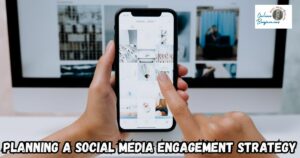
- How To Develop A Consistent Brand Look And Feel

Wishing You Much Success with Your Digital Art Business,
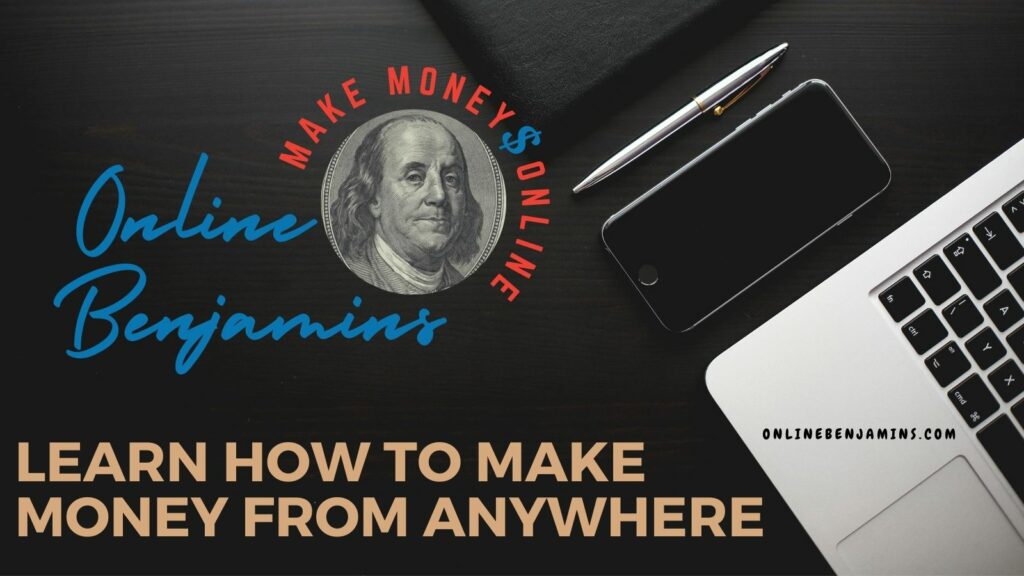
- onlinebenjamins.com
- thebeachangler.com
- thesinnerinthemirror.com
- Facebook: Online Benjamins
- Twitter: @onlinebenjamin1
- Instagram: dotcomdinero
- YouTube: Online Benjamins
Rex
P.S. If you have any questions or are unsure of anything, I am here, and I promise I will get back to you on all of your questions and comments. Just leave them below in the comment section. Follow me on Twitter: @onlinebenjamin1, Instagram: dotcomdinero, and Facebook: Online Benjamins.
Hi,
Thanks for stopping by and congratulations for taking the first steps to building your own online business. I’ve been in business both offline and online since 1997. I would consider it an honor to help you build your business. Father of 3, life long outdoorsman with an education in Genetics and Economics. This site is about cutting through the BS and finding the real opportunities in the online world. I look forward to working with you.
